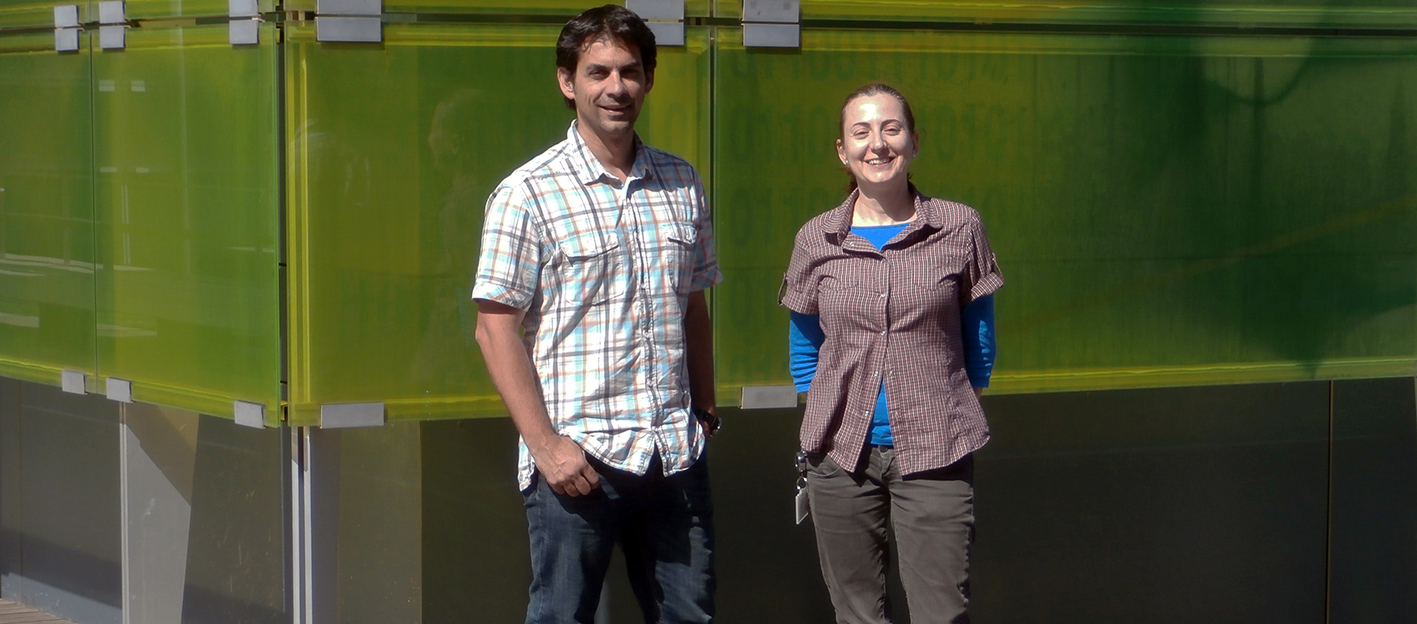
Functional Genomics and Biotechnology of ncRNAs
Research line: Plant-pathogen interaction

- Research
- Staff
- Publications
- Projects
- Patent
- Thesis
Research
The development of next-generation nucleic acid sequencing techniques has enabled the discovery of new forms and pathways of gene expression regulation in both living organisms and viral agents. All this information is allowing us to better understand the enormous complexity of every biological entity on the planet, and it is prompting a reevaluation of both the classical concept of a gene and the functional significance of every base pair in a genome. At the heart of this revolution is the central role that RNA plays in a wide range of biological and infectious processes.
Our group is interested in identifying and characterizing new biological functions of non-coding RNAs, with a particular focus on their catalytic activities (ribozymes) and regulatory capacities (riboregulators), as well as exploring the biotechnological potential of newly discovered RNA motifs. To achieve this, we use multidisciplinary approaches that combine Bioinformatics, Biochemistry, Molecular and Structural Biology, using plants as our main biological reference system.
Our current specific research lines include:
- Discovery and characterization of the genome of all viruses and infectious RNAs on the planet through cloud-based computational approaches (de la Peña et al. Cells 2020; de la Peña et al. Virus Evol 2021; Edgar et al. Nature 2022).
- Understanding the function and biological role of circular RNAs with ribozymes encoded in plant and animal genomes (Cervera et al. Genome Biol 2016; de la Peña & Cervera RNA Biol 2017; Cervera & de la Peña, Nucleic Acids Res 2020).
- Bioinformatic exploration and characterization of new catalytic and regulatory RNA motifs (de la Peña et al. Molecules 2017).
- Functional characterization of small ribozymes associated with retrotransposons (Cervera & de la Peña, Mol Biol Evol 2014).
- Uncovering the role of ribozymes conserved in introns of human tumor suppressor genes and tumor antigens (de la Peña, García-Robles, EMBO Rep 2010; de la Peña et al. Biol Chem 2012; de la Peña, Ribozymes – Chapter 11, 2021).
- Development of potential biotechnological tools based on circular RNAs with ribozymes for gene therapy applications (de la Peña, Adv Exp Medicine Biology 2018).
Staff
Staff Researchers
Contract Staff and Fellows
Publications
- Edgar R, Taylor J, Lin V, Altman T, Barbera P, Meleshko D, Lohr D, Novakovsky G, Buchfink B, Al-Shayeb B, Banfield JF, de la Peña M, Korobeynikov A, Chikhi R, Babaian A (2021) Petabase-scale sequence alignment catalyses viral discovery. Nature 602:142-147 (all authors contributed equally) doi: 10.1038/s41586-021-04332-2
- de la Peña, M (2021) Small Self‐Cleaving Ribozymes in the Genomes of Vertebrates. Ribozymes Vol 2, Editorial Wiley-VCH GmbH (Chapter 11, Editors: S. Müller, B. Masquida y W. Winkler) doi: https://doi.org/10.1002/9783527814527.ch11
- de la Peña, M, Ceprián, R, Casey, JL, Cervera, A (2021) Hepatitis delta virus-like circular RNAs from diverse metazoans encode conserved hammerhead ribozymes. Virus Evol 7(1): veab016. https://doi.org/10.1093/ve/veab016
- de la Peña, M, Ceprián, R, Cervera, A (2020) A singular and widespread group of mobile genetic elements: RNA circles with autocatalytic ribozymes. Cells, 9(12): 2555. https://doi.org/10.3390/cells9122555
- Cervera, A, de la Peña, M (2020) Small circRNAs with self-cleaving ribozymes are highly expressed in diverse metazoan transcriptomes. Nucl Acids Res, 48(9):5054-64. https://doi.org/10.1093/nar/gkaa187
- de la Peña M (2018) Circular RNAs Biogenesis in Eukaryotes Through Self-Cleaving Hammerhead Ribozymes. Adv Exp Med Biol. 1087:53-63. doi: 10.1007/978-981-13-1426-1_5. https://doi.org/10.1007/978-981-13-1426-1_5
- Rico P., Rodrigo-Navarro A., de la Peña M., Moulisova V., Costell M., Salmerón-Sánchez M. (2018) Simultaneous Boron Ion-Channel/Growth Factor Receptor Activation for Enhanced Vascularization. Adv Biosys.1800220. https://doi.org/10.1002/adbi.201800220
- Alquézar B, Rodríguez A, de la Peña M., Peña L (2017) Genomic Analysis of Terpene Synthase Family and Functional Characterization of Seven Sesquiterpene Synthases from Citrus sinensis. Front Plant Sci. 8:1481. doi: 10.3389/fpls.2017.01481
- de la Peña M, Cervera A (2017) Circular RNAs with hammerhead ribozymes encoded in eukaryotic genomes: The enemy at home. RNA Biol. 14(8):985-991. doi: 10.1080/15476286.2017.1321730
- de la Peña M, García-Robles I, Cervera A (2017) The Hammerhead Ribozyme: A Long History for a Short RNA. Molecules. 22(1). pii: E78. doi: 10.3390/molecules22010078
- Cervera A, Urbina D, de la Peña M. (2016) Retrozymes are a unique family of non-autonomous retrotransposons with hammerhead ribozymes that propagate in plants through circular RNAs. Genome Biol. 17(1):135. doi: 10.1186/s13059-016-1002-4
- Cervera A, de la Peña M. (2014) Eukaryotic penelope-like retroelements encode hammerhead ribozyme motifs. Mol Biol Evol. 31(11):2941-7. doi: 10.1093/molbev/msu232
- Kyrieleis OJ, Chang J, de la Peña M., Shuman S, Cusack S (2014) Crystal structure of vaccinia virus mRNA capping enzyme provides insights into the mechanism and evolution of the capping apparatus. Structure. 2014 Mar 4;22(3):452-65. doi: 10.1016/j.str.2013.12.014
- García-Robles I, Sánchez-Navarro J, de la Peña M. (2012) Intronic hammerhead ribozymes in mRNA biogenesis. Biol Chem. 393(11):1317-26. doi: 10.1515/hsz-2012-0223
- Hammann C, Luptak A, Perreault J, de la Peña M. (2012) The ubiquitous hammerhead ribozyme. RNA. 18(5):871-85. doi: 10.1261/rna.031401.111
- Kalweit A, Przybilski R, Seehafer C, de la Peña M., Hammann C (2012) Characterization of hammerhead ribozyme reactionsMethods Mol Biol. 848:5-20. doi: 10.1007/978-1-61779-545-9_2.de la Peña M., García-Robles I (2010) Ubiquitous presence of the hammerhead ribozyme motif along the tree of lifeRNA. 16(10):1943-50. doi: 10.1261/rna.2130310
- de la Peña M., García-Robles I (2010) Intronic hammerhead ribozymes are ultraconserved in the human genomeEMBO Rep. 11(9):711-6. doi: 10.1038/embor.2010.100






